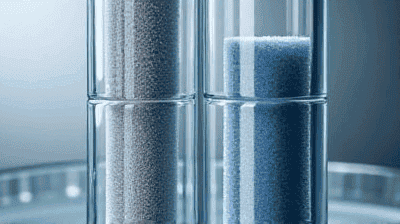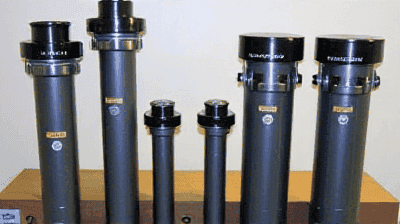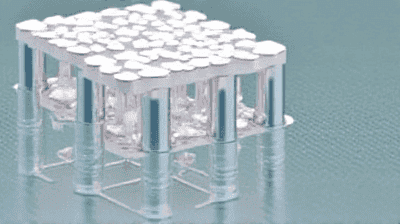
Water is one of the most essential resources on our planet, yet access to clean and safe drinking water remains a challenge for millions around the world. Traditional water purification methods, while effective, often come with limitations in terms of efficiency, cost, and environmental impact. However, a revolutionary material known as graphene is changing the landscape of water filtration.
Graphene is a single layer of carbon atoms arranged in a two-dimensional honeycomb lattice. Discovered in 2004 by physicists Andre Geim and Konstantin Novoselov, graphene is hailed as a "wonder material" due to its remarkable properties. It boasts exceptional electrical and thermal conductivity, mechanical strength, flexibility, and impermeability.
Graphene can be produced in various forms, including monolayers, few-layer graphene, and graphene oxide, each with distinct characteristics and potential applications. The unique properties of graphene make it an ideal candidate for a wide range of applications, from electronics and energy storage to biomedical devices and filtration technologies.
The unique structure of graphene is what gives it its extraordinary properties. The carbon atoms in graphene are bonded together with sp2 hybridization, forming strong covalent bonds. This arrangement allows graphene to exhibit:
These properties are what make graphene particularly useful in creating advanced water filtration systems.

Despite being a fundamental human right, access to clean water remains a global challenge. According to the World Health Organization (WHO), approximately 2.2 billion people around the world lack access to safe drinking water. This crisis is exacerbated by factors such as urbanization, pollution, climate change, and population growth.
Traditional water filtration methods include reverse osmosis, activated carbon filters, and UV purification. While these processes can be effective, they are not without limitations:
As the demand for clean water grows, there is an urgent need for innovative filtration technologies that are efficient, cost-effective, and environmentally friendly.
Graphene water filters utilize the unique properties of graphene to remove impurities from water. The filtration process involves several mechanisms, including:
Size Exclusion: The ultra-thin structure of graphene allows water molecules to pass through while blocking larger contaminants, including bacteria, viruses, and pollutants.
Adsorption: Graphene has a large surface area and a high affinity for various molecules, enabling it to adsorb chemicals, heavy metals, and organic contaminants from water.
Electrostatic Interactions: Functionalized graphene can interact with charged particles through electrostatic attraction, further enhancing its ability to filter out impurities.
Graphene can be incorporated into filtration systems in various forms, depending on the intended application:
Graphene Oxide Membranes: Graphene oxide can be used to create membranes that are highly selective for water while rejecting unwanted contaminants. These membranes can be configured in various ways to enhance filtration efficiency.
Graphene-Enhanced Carbon Filters: Combining graphene with traditional activated carbon filters can significantly improve their adsorption capacity and efficiency in removing contaminants.
Graphene-Polymer Composites: By blending graphene with polymers, engineers can create flexible and durable filtration materials suitable for a wide range of environments.

The incorporation of graphene into water filtration presents several compelling advantages:
Graphene water filters are capable of removing a wide range of contaminants, including bacteria, viruses, heavy metals, and microplastics. Studies have shown that graphene oxide membranes can achieve high purification rates and effectively desalinate seawater.
Graphene filters operate efficiently at lower pressures compared to traditional methods, resulting in reduced energy consumption. This efficiency can lead to lower operational costs and a decreased carbon footprint.
Graphene is highly resistant to wear and tear, meaning graphene water filters can have longer lifespans than conventional filters. This durability reduces the need for frequent replacement and minimizes waste generation.
The thinness of graphene allows for the design of compact filtration systems, making them suitable for urban environments and areas with limited space for infrastructure.
Graphene water filters can be tailored for specific applications, ranging from household use to industrial-scale water treatment. Their adaptability makes graphene a valuable innovation in diverse settings.
The potential applications of graphene water filters are vast, offering innovative solutions to address water purification challenges worldwide:
Graphene water filters can be used for household systems to provide clean drinking water, significantly improving the quality of water supplied to homes and communities. They can also be integrated into water dispensers for offices and public spaces.
Industries requiring high-quality water, such as pharmaceuticals, food and beverage, and electronics, can benefit from graphene filtration systems. These filters can be customized to remove specific contaminants, ensuring compliance with industry standards.
Graphene oxide membranes hold great promise for desalination applications, enabling the efficient removal of salt and other dissolved solids from seawater. This technology can provide fresh water to regions facing water scarcity.
Graphene filters can be incorporated into wastewater treatment facilities to enhance the removal of pollutants before water is released back into natural waterways. This application supports sustainable water management practices.
In disaster-stricken areas or regions lacking access to safe drinking water, portable graphene water filters can provide immediate solutions for emergency water purification, ensuring health and safety.

While graphene water filters offer tremendous potential, several challenges must be addressed to facilitate widespread adoption:
The current production methods for graphene tend to be expensive, which may limit the affordability of graphene water filters. Continued research into cost-effective manufacturing techniques is essential to make these innovations accessible.
Scaling up graphene production while maintaining material quality can be challenging. Developing standardized processes for large-scale production will be necessary to meet increasing demand.
As a relatively new technology, graphene water filters must undergo rigorous testing and obtain regulatory approvals before being widely implemented in commercial applications. Collaboration with regulatory bodies will be important in this regard.
Education and awareness campaigns about the benefits of graphene water filters are necessary to encourage adoption among consumers. Understanding the advantages and effectiveness of these filters will drive market acceptance.
While graphene offers significant environmental benefits in filtration, the production process itself must be evaluated for potential environmental impacts. Sustainable practices should be prioritized to ensure a positive overall effect.
Several researchers and companies are exploring the use of graphene in water filtration, leading to promising developments and success stories:
Various universities are conducting research on the application of graphene oxide membranes for water filtration. Studies have shown that these membranes can achieve impressive rejection rates for contaminants, paving the way for future applications.
Some companies have started developing graphene-based filtration technologies for industrial purposes. Their focus is on creating systems capable of addressing specific contamination challenges in various sectors.
Pilot projects testing graphene oxide membranes for desalination have demonstrated significant potential in providing fresh water from seawater. These projects are crucial in evaluating the real-world applicability of graphene technology.
Startups specializing in graphene technologies have emerged, aiming to commercialize graphene water filters for both household and industrial applications. Their innovations demonstrate the viability of graphene in addressing water purification challenges.
Collaboration between universities, research institutions, and industry players is fostering advancements in graphene water filtration technology. These partnerships help speed up research, development, and commercialization efforts.
The future of graphene water filters is promising, with potential advancements that could significantly impact water purification technologies:
As research continues, we can expect improvements in the performance and efficiency of graphene water filters. Innovations in membrane design and functionalization techniques will drive further enhancements.
Graphene water filters may find applications beyond conventional water purification. Future developments could include integration with emerging technologies, such as smart water management systems, to optimize filtration processes.
Advancements in sustainable production methods for graphene will be essential to maximizing the environmental benefits of graphene water filters. Research efforts should focus on minimizing resource use and waste generation in production.
As production costs decrease and public awareness about the benefits of graphene water filters rises, access to clean drinking water may improve for underserved communities and populations worldwide.
Government policies that value innovation and sustainability will play a key role in promoting the development and adoption of graphene water filter technologies. Supportive policies can lead to increased investment in research, production, and implementation.
Graphene water filters represent a transformative innovation in the field of water purification, offering an effective and sustainable alternative to traditional filtration methods. With their unique properties and versatility, graphene-based filters have the potential to revolutionize how we address global water challenges.
As research and development continue, the practical applications of graphene water filters are set to expand, contributing to improved access to clean water for communities around the world. By embracing the power of graphene and investing in sustainable technologies, we can work towards a future where safe drinking water is accessible to everyone, protecting both public health and the environment.